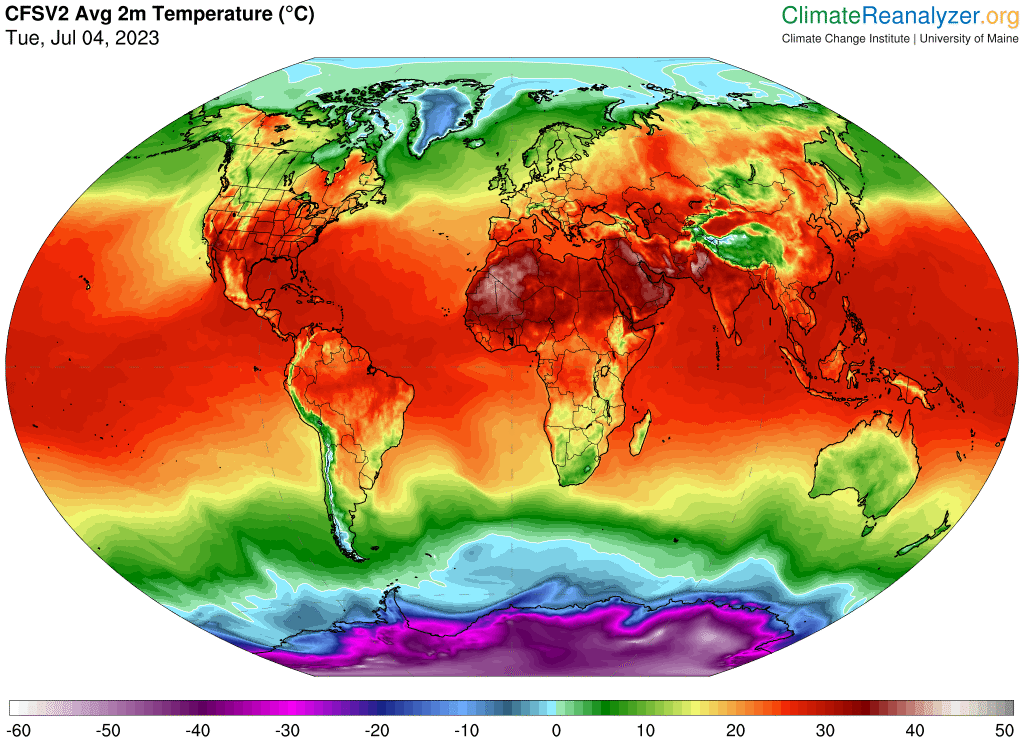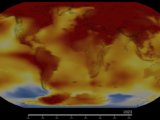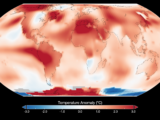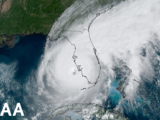
Meditating on the Lotus Blooms: In Hinduism, the lotus represents spiritual enlightenment, beauty, fertility, purity, prosperity and eternity. It is said that there’s a lotus flower in every Hindu’s heart, and that when this lotus blooms, the person achieves enlightenment: Glynn Wilson
Staff Report –
Tuesday was the hottest day on Earth since at least 1979, with the global average temperature reaching 62.92 degrees Fahrenheit (17.18 degrees Celsius), according to data from the U.S. National Centers for Environmental Prediction.
As a result, some scientists believe July 4 may have been one of the hottest days on Earth in around 125,000 years, due to a dangerous combination of climate change causing global temperatures to soar, the return of the El Niño pattern and the start of summer in the northern hemisphere.
In the United States, 57 million people were exposed to dangerous heat on Tuesday, according to The Washington Post’s extreme heat tracker.
At the same time, China was gripped by a sizzling heat wave, the Antarctic is hotter than usual during its winter, and temperatures in the north of Africa reached 122F, Reuters reported.
Tuesday’s global average temperature was calculated by a model that uses data from weather stations, ships, ocean buoys and satellites, Paulo Ceppi, a climate scientist at London’s Grantham Institute, explained in an email Wednesday. This modeling system has been used to estimate daily average temperatures starting in 1979.
“This is our ‘best guess’ of what the surface temperature at each point on earth was yesterday,” he said.
Instrument-based global temperature records go back to the mid-19th century, but for temperatures before that, scientists are dependent on proxy data captured through evidence left in tree rings and ice cores.
“These data tell us that it hasn’t been this warm since at least 125,000 years ago, which was the previous interglacial,” Ceppi said, referring to a period of unusual warmth between two ice ages.
The last time the record was broken was on Monday, when the temperature was 62.62 degrees Fahrenheit, according to the same data. Before that, the highest recorded average temperature in history was 62.46 degrees Fahrenheit as measured on Aug. 14, 2016, during the previous El Niño cycle.
Unless action is taken to combat carbon emissions, experts agree that temperatures are likely to get even hotter.
“When’s the hottest day likely to be? It’s going to be when global warming, El Niño and the annual cycle all line up together. Which is the next couple months,” said Myles Allen, a professor of geosystem science at Oxford University, in a phone interview Wednesday. “It’s a triple whammy.”
Tuesday’s record-breaking temperature is partly explained by climate change causing the world to heat up, Allen said, adding that global temperatures are already 1.25 degrees Celsius (2.25 degrees Fahrenheit) above their preindustrial average.
“It’s warming 0.25 degrees Celsius a decade,” he said. “That’s why we see records broken continuously, rather than just as one-offs.”
Last year, a report from a United Nations panel of 278 top climate experts warned that the planet was on track to surpass the globally agreed target of keeping global warming to 1.5 degrees Celsius (2.7 Fahrenheit). Beyond that threshold, scientists fear that people will not be able to adapt to climate-induced disasters such as heat waves, famines and infectious diseases.
“If we want to limit warming to 1.5 degrees, which is the world’s governments’ aim, we’ve got very little time to stop the warming,” Allen said. “You don’t need a climate model to know that — it’s just a matter of braking distances.”
We looked at 1,200 possibilities for the planet’s future. These are our best hope.
An analysis by The Washington Post of more than 1,200 scenarios for climate change shows some 230 different paths that would leave Earth below 1.5 degrees Celsius by the end of the 21st century. The best-case scenarios, however, require the world to go well beyond any “net zero” goal for fossil fuel emissions and to begin removing more carbon dioxide from the atmosphere than it puts in.
“The solution to the problem is actually rather simple,” Allen said: “Capturing carbon dioxide, either where it is generated or recapturing it from the atmosphere and disposing of it back underground. If we did this, we would definitely use much less fossil fuels.”
Over the coming months, scientists are expecting more days of record-breaking heat due to the return of El Niño after a four-year hiatus. In June, scientists declared that the phenomenon — which encourages the atmosphere to trap more heat — was back.
“The global temperature record is a combination of natural variation in the climate and the underlying global warming trend,” Ceppi said, with the natural variation largely explained by El Niño.
The pattern describes how the ocean “inhales” and “exhales” heat every few years, Ceppi said. “We’re currently in a phase where the ocean is releasing heat to the atmosphere.”
“Looking to the future, we can expect global warming to continue and hence temperature records to be broken increasingly frequently, unless we rapidly act to reduce greenhouse gas emissions to net zero,” Ceppi warned.
___
If you support truth in reporting with no paywall, and fearless writing with no popup ads or sponsored content, consider making a contribution today with GoFundMe or Patreon or PayPal. We just tell it like it is, no sensational clickbait or pretentious BS.














